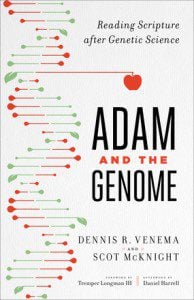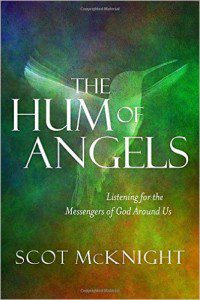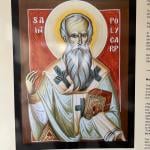Ben Sternke, the cost of non-discipleship: “At our Missional Community gathering this past Sunday someone paraphrased Dallas Willard: “If you think it’s hard being a disciple of Christ, you should try living the other way.” This is exactly what Jesus was saying in these stories: living to make a name for yourself or secure your own future is way too expensive. Stop now before you ruin yourself utterly. Jesus was talking in these stories about the cost of non-discipleship, and it’s breathtakingly high.”
Speaking of discipleship, Pastor Derwin writes about this too.
Ted Olsen, at CT, sketches the church discipline story of Mars Hill, with a recent development.
Good reminder from my friend Tom Smith about helping the poor: “It strikes me as odd that the people who decide on the effectiveness of these programs are not the poor themselves but the “top experts” sitting over the sea in some of the most prestigious universities. These top experts use “scientific methods” that are quantitative rather than the biased reporting of the NGO’s. They know how to “rigorously assess.” The experts decide, “The experts who were polled are not anti-laptop, but given the more basic needs in poor countries, they said donating computers was highly cost-ineffective compared with the alternatives.” What do the poor themselves say?”
John Fea: “Obama may be the most explicitly Christian president in American history. If we analyze his language in the same way that historians examine the religious language of the Founding Fathers or even George W. Bush, we will find that Obama’s piety, use of the Bible, and references to Christian faith and theology put most other American presidents to shame on this front. I think there may be good reasons why some people will not vote for Obama in November, but his commitment to Christianity is not one of them.”
 Just in case you’ve not seen the Decorah Eagles.
Just in case you’ve not seen the Decorah Eagles.
Jonathan Wilson-Hartgrove: “I had a neighbor growing up, Alan, who worked for the power company. He was a young guy then and didn’t mind danger or odd hours, so the company put him on call for emergency repair jobs. Early one morning, Alan was called out to fix a stoplight at a busy intersection. He parked his ladder truck in the middle of the intersection, put out his caution cones, and climbed to fix the light, some 20 feet in the air. While he was working, a drunk driver raced through the intersection and clipped the back of Alan’s truck. Alan flew off the top of his ladder, cut a back flip in the air, and somehow landed on his feet in the intersection. Miraculously, he wasn’t hurt. But Alan had a hard time trusting ladders after that. Wanting to keep his feet on the ground, Alan found another job.”
Roger Olsen reflects on “renewalism.”
Tim Dalrymple on the GOP process: “When all of this is combined with Romney’s previous positioning, it makes for an ominous situation. In some ways, the Romney campaign in the 2012 cycle is an eerie reflection of the Hillary Clinton campaign in 2008. Being the putative frontrunner, being “inevitable,” having the superior organization and network of powerful and well-healed supporters, is not all it’s cracked up to be. It’s a boring story — and if there’s one thing our rapacious media machine cannot stand, it’s a boring story. Every stumble from the “frontrunner” and every victory from a “challenger” creates new narratives the media want to tell. It’s also not inspiring. Americans don’t like to be told whom they’ll vote for, and they love the underdog. America is an underdog story. Romney has run a Competency Campaign — and that’s just not as inspiring as a Movement Campaign. Competency, excellence, superlative achievement — these things are nice. But we believe in causes, visions, uprisings. Happily for Romney, there is no Republican version of Candidate Obama to go up against Romney the Inevitable in this cycle. But many conservatives seem to be deciding that Santorum is close enough.”
Meanderings in the News
 How to use social media to promote women.
How to use social media to promote women.
We need more Phone Booth Bookshelves.
Walter Russell Mead: “The typical American church today is organized around the ideas and realities of blue model America. Denominational structures (weakened by years of cutbacks in many cases) are bureaucratic staff organizations. Most local congregations own a large building and land; most of their budgets are eaten up by professional salaries and building maintenance. The mainline Protestant churches — Methodists, Presbyterians, Episcopalians, Congregationalists, most Lutherans — are the most committed to the old model, but many others are in the same general condition. Church organizations, especially in America, move with the times or die, and the ways Americans are re-imagining and re-engineering their social institutions are beginning to change the way churches work….”
Judea Pearl’s poem to his slaughtered son, Daniel Pearl.
So cool!
While we are thinking about it, let’s get some exercise: “Moving the body demands a lot from the brain. Exercise activates countless neurons, which generate, receive and interpret repeated, rapid-fire messages from the nervous system, coordinating muscle contractions, vision, balance, organ function and all of the complex interactions of bodily systems that allow you to take one step, then another. This increase in brain activity naturally increases the brain’s need for nutrients, but until recently, scientists hadn’t fully understood how neurons fuel themselves during exercise. Now a series of animal studies from Japan suggest that the exercising brain has unique methods of keeping itself fueled. What’s more, the finely honed energy balance that occurs in the brain appears to have implications not only for how well the brain functions during exercise, but also for how well our thinking and memory work the rest of the time.”
A free campus, 217 acres, 54 buildings. Free.
Deborah Blum: “I hate to admit this but for some time – okay, almost the two years since it was published – I cherished an attitude about Theodore Gray’s dazzling e-tribute to the Periodic Table, The Elements. It was too jazzy, I told myself, too flashy. Of course, what I meant was that it was so successful. It’s easy to maintain that envy about The Elements even today. As The Wall Street Journalnoted in a recent story on e-publishing, this virtuoso exploration of our chemical world remains “a runaway best-seller”, selling more than 250,000 electronic copies and generating more than $2.5 million in income for Touch Press publishing. But I’d like to here to get past author envy and take a serious look at what makes this publication so exceptionally successful – and, in fact, so exceptional. I should say at this point that I am superficially acquainted with Theodore Gray – we’ve both been part of programs on communicating chemistry. And that one of his comments about communicating chemistry has stayed with me- the idea that we can reach people afraid of the subject by showing them that it can also be beautiful.”
Panera pay-what-you-can. Not to self: if you ever decide to do this yourself, don’t do it near a college campus.
Two articles on sleep patterns, the first by Stephanie Hegarty: “In the early 1990s, psychiatrist Thomas Wehr conducted an experiment in which a group of people were plunged into darkness for 14 hours every day for a month. It took some time for their sleep to regulate but by the fourth week the subjects settled into a very distinct sleeping pattern. They slept first for four hours, then woke for one or two hours before falling into a second four-hour sleep. Though sleep scientists were impressed by the study, among the general public the idea that we must sleep for eight consecutive hours persists. In 2001, historian Roger Ekirch of Virginia Tech published a seminal paper, drawn from 16 years of research, revealing a wealth of historical evidence that humans used to sleep in two distinct chunks. His book At Day’s Close: Night in Times Past, published four years later, unearths more than 500 references to a segmented sleeping pattern – in diaries, court records, medical books and literature, from Homer’s Odyssey to an anthropological account of modern tribes in Nigeria.” And aging eyes may be the culprit to disrupted patterns of sleep!
Meanderings in Sports
 A good story about Jeremy Lin.
A good story about Jeremy Lin.
Go Andi!
If you haven’t seen this about Gary Carter, take a look.
Look at the size of those hands on Dr J: yowzers!












